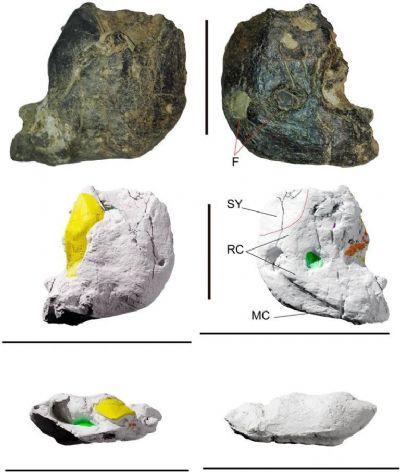New teeth of a basal Macronarian (Sauropoda) from the Jurassic–Cretaceous transition of Spain
Abstract
In this work, a dentary, and several teeth from the Valdepalazuelos-Tenadas del Carrascal site (Burgos, Spain) are studied. Geologically,this site is situatedat the base of the Rupelo Formation (Cuenca de Cameros), of Tithonian–Berriasian age. This formation has been interpreted as lacustrine-palustrine deposits with low gradient margins and with periodic changes in the water level. MDS-VPCR,851 is a fragment of the rostral symphyseal zone of a right dentary, a robust bone with a rostral ridge on its lingual surface, large diameter foramina on the lingual surface, a wide Meckelian canal extending from the rostroventral margin, semicircular symphysis arranged rostrolingually, and with two alveoli preserving two erupting teetheach. Although the functional teeth have not been preserved, each alveolus could contain one active tooth and at least two replacement teeth. Eight maxillary and mandibular teeth are described, with a spatulate crown, a rough enamel surface, a D-shaped croos-section, and a very marked cingulum. The dentary and teeth from this site have evident differences with those of other taxa and specimens described in the Kimmeridgian-Berriasian of the Iberian Peninsula. Its greatest similarities are with Camarasaurus, but in the specimens from Valdepalazuelos there are characters that seem to be unique and differ from that taxon. Consequently. the specimens described here are identified as belonging to a basal macronarian, close to Camarasaurus. This work points to the existence of two macronarian sauropods in the Tithonian–Berriasian transit of the Cameros Basin, and increases the diversity of the Iberian record of that time period.
https://link.springer.com/article/10.1007/s41513-023-00217-7https://link.springer.com/article/10.1007/s41513-023-00217-7
« Cerca de 5.000 personas visita ... de Navarra Discovering Spain’s Sierra de ... dia forgot »









